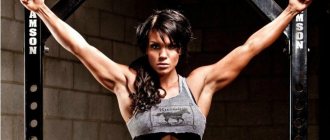Why do people walk with sticks?
This is a special type of training - Nordic walking, in the world it is also known as Finnish walking. The essence of training is walking with the support of poles, they are called Nordics; additional support removes part of the load from the legs and back. Nordic walking originated in the 90s of the last century, and its popularity has not fallen to this day.
These are light physical activities that have virtually no contraindications. In order to start training, you do not need to be in good physical shape or have any special skills. The body will receive very moderate loads, but they will bring tangible benefits.
Contraindications to classes
Many contraindications are found specifically in older people:
- Hypertension in the acute stage;
- Injuries to the shoulder girdle of the skeleton, as well as early rehabilitation after fractures of the limbs;
- Colds and other diseases associated with difficulty breathing, cough and fever;
- Osteochondrosis in the acute stage and other diseases of the spine, when the doctor does not give consent to exercise.
Many people are also concerned about whether it is possible to exercise with varicose veins. If the disease is mild, doctors do not prohibit this. Regular physical activity that does not cause severe fatigue will even be beneficial.
But it is best to exercise in compression stockings and under no circumstances walk until you lose strength.
What do you need for Nordic walking?
You will need not only poles, but also sportswear that will be comfortable. Nordics are selected individually, taking into account a person’s height and structural features of his body. Clothes should not restrict movement; it is advisable to choose a sports suit made from natural fabrics that allow air to pass through. In winter, you will need layers of clothing to keep your body warm. The uniform for the winter should be selected so that the top layer can be removed.
Overheating while walking will turn your workout into a detriment rather than a benefit.
Special attention should be paid to the choice of shoes; you will have to walk not only on asphalt and even park paths, so the soles of the sneakers should be thick enough. Choose a structured sole rather than a smooth one, otherwise it will slip in winter. In winter, you will have to wear a warm sock under your sneakers; accordingly, the shoe size should allow this.
It would be a mistake to think that ski poles are suitable for Finnish walking. The ski poles are too high, and they have a different structure. If you constantly press the tip of your ski pole into the asphalt, it will quickly deteriorate; they are designed for use on snow-covered soft surfaces.
Reviews
Nordic walking is becoming an increasingly popular rehabilitation method for people recovering from accidents. The merits of this sport were appreciated by world and Olympic champion Robert Korzeniewski, who did not “hang up his sports shoes on a hook” after finishing his career.
“I started walking with poles after my last start, at the Olympic Games in Athens, but already in 1998 I watched with admiration as many people began to practice Nordic walking,” says the Olympic champion. “Now I often play this sport, especially because it is something that allows me to actively spend time with my wife and daughter.”
This is a great advantage of this discipline - anyone can practice Nordic walking, regardless of age and physical fitness. The pace should be adjusted to your ability, but you should be sweaty and a little out of breath after class.
Based on materials from the site hodim-vmeste.ru
How to master the Nordic walking technique?
The first thing to remember is that training should take place at a comfortable pace. If during exercise you feel short of breath, your heart rate increases and your breathing becomes irregular, it means you are moving too fast. At these moments, you need to gradually slow down, then stop and rest until your pulse and breathing return to normal.
Walking technique:
- Before training, you need to adjust the poles, or rather the length of the straps on them. It should be such that holding the sticks in your hands is comfortable, without having to put in extra effort;
- Take the starting position - knees slightly bent, slightly bend your right arm at the elbow so that the stick is at an angle to the ground and is slightly pulled back. In this case, the left hand should be freely lowered down and slightly pulled back;
- When taking a step with your right foot, you should move your left hand with a stick back, and vice versa. When pushing off, transfer part of your body weight to the stick, while keeping your elbows straight. When you move your hand back, let go of the stick, it will be held on the belt;
- When taking a step, the foot should land on the heel and smoothly roll to the toe.
Sometimes, to learn Nordic walking, the poles are not squeezed with the palms, they are simply dragged along behind them, and at this time the person instills in his body the correct position of the hands. When your hands remember the desired position, you can move on to practicing push-offs. Try to push off with one stick, when you succeed, do it with two. Breathing should be calm and measured; for every second step, inhale through the nose, and for every fourth step, exhale through the mouth.
Learning to walk correctly: important nuances
Now, let's look at how to properly practice Nordic walking with poles - what you need to know before starting the race, what benefits it brings:
- You need to adhere to the correct breathing rhythm. Try to walk, inhale oxygen through your nose and exhale through your mouth. The optimal pace is to inhale every second step, and exhale, respectively, every fourth.
- You should not abruptly end your workout - do breathing exercises, several stretching exercises, calm your heartbeat and allow your body to cool down smoothly.
- Choose comfortable sportswear that will not restrict your movements. When choosing poles, be guided by height - if you put the right pair on your big toes, your arms will be bent at the elbows exactly 90°;
- The optimal training scheme for beginners is preferably to walk 3 times a week for 50 minutes. Later, you can increase the duration to 1.5 hours, and to increase the load, especially zealous athletes install special weights on their equipment.
How to warm up before Nordic walking?
As before any other load, you need a warm-up before Nordic walking. This is the preparation of muscles and connective tissues for prolonged exercise, warming up the whole body. A few simple exercises are enough to warm up.
Exercises 1
Take the stick with both hands, place it horizontally in front of you, then lift it above your head. From this position, make several tilts to the left and to the right.
Exercise 2
Take one leg forward, as if doing a lunge, and lean toward that leg while moving your arms back behind your back. Then return to the starting position and do the opposite movement - bend your torso back and bring your arms forward. Do a few reps, then switch legs and repeat.
Exercise 3
Take a stick in both hands, move them back and rest the ends of the sticks on the ground. Do a squat using the poles, but don’t put your entire body weight on them. You need to start with 3-4 squats, then gradually increase the number to bring it up to 15 squats.
Exercise 4
Take the stick in your right hand, place it on the ground, make it your fulcrum. Slightly move your left leg back and bend it at the knee, grab your left calf with your left hand, pull your ankle towards your left buttock. Hold the position for 20 seconds, then take the stick with your other hand and do the same for the opposite leg. Make sure your back remains straight while performing the exercise.
Exercise 5
Place both poles vertically in front of you, shoulder-width apart, at a distance slightly less than arm's length. Extend your leg in front of you as if you want to take a step, place it on your heel, and point your toe up. Then bend your other leg at the knee and lean your body forward. The back from the lower back to the shoulder blades and shoulders should remain straight. Maintain this position for 15 seconds, then switch legs and do the exercise on the other side.
Exercise 6
Take a stick in each hand and spread them apart, then move your arms back, then lift them up. Raise the poles to such a height until you feel sufficient tension in your back muscles. Do the exercise very slowly, avoid sudden jerking movements. Three such repetitions are enough to warm up.
Exercise 7
Take the stick in your right hand, lift it up and bend it to bring it back. When your hand is behind your head and the stick remains behind your back, grab it from behind with your other hand at approximately pelvic level. Raise your right arm up until you feel sufficient tension in the muscles. Do a few repetitions, then switch hands and do the same number.
How not to walk: the main mistakes of beginners
Now you know how to properly use Nordic poles when walking, but this will not protect you from the most common mistakes, therefore, it is better to familiarize yourself with them:
- The athlete does not straighten his arms, constantly keeping them bent at the elbows. At the same time, the shoulder girdle does not work at all, which is wrong;
- The arm does not move fully back - the flight stops at the level of the hips. Walk correctly, raising your arms the same distance both forward and backward;
- The Nordic walking technique requires holding the stick between the thumb and index finger, and not in the fist, as most beginners do;
- The sticks move as if “on rails”; they do not move or move apart;
- It is important not to imitate pushing off the ground, but, namely, pushing off through effort. Otherwise, the equipment will be of no use;
- The hand should not be bent - it should be clearly and firmly fixed.
How often should I exercise?
When creating a routine, it is important to consider not only the frequency, but also the duration of one workout. Most trainers recommend conducting half-hour workouts with a frequency of 2-3 sessions per week. When people exercise without a coach, as a rule, they prefer to walk with Nordics for about an hour. At the very beginning, training should be short and easy, lasting no more than 15 minutes with a break of three days. You need to take into account your physical condition, level of strength and energy. But even the shortest lesson involves warming up before Nordic walking; this is a mandatory safety measure.
Why do you need to track your movements and walk correctly?
If you know how to properly walk with poles, the exercise will really help you achieve the effect you are looking for;
The therapeutic effect of training occurs only if the correct technique is followed;
If you walk incorrectly, you can harm your body, especially if training is part of a recovery course after illness or injury.
If you are not sure that you understand how to properly perform exercises with Nordic walking poles, watch the video materials. Hire an experienced trainer for your first lesson, who will ensure that you have a good understanding of the movement technique. In the future, you can walk on your own! I wish you success in sports and health!
How to choose good poles
First of all, they must be telescopic, that is, adjustable in height. And it needs to be selected according to the formula: 0.66 x your height. For example, if you are 170 cm tall, the height of the poles should be 112 cm. Taking into account individual body features, the height may vary slightly.
As for prices, they start from 400 UAH for a set of poles. As a rule, they are made in China and will not last long if used frequently. Prices for high-quality branded poles are in the range of 1.7–2.0 thousand UAH.










